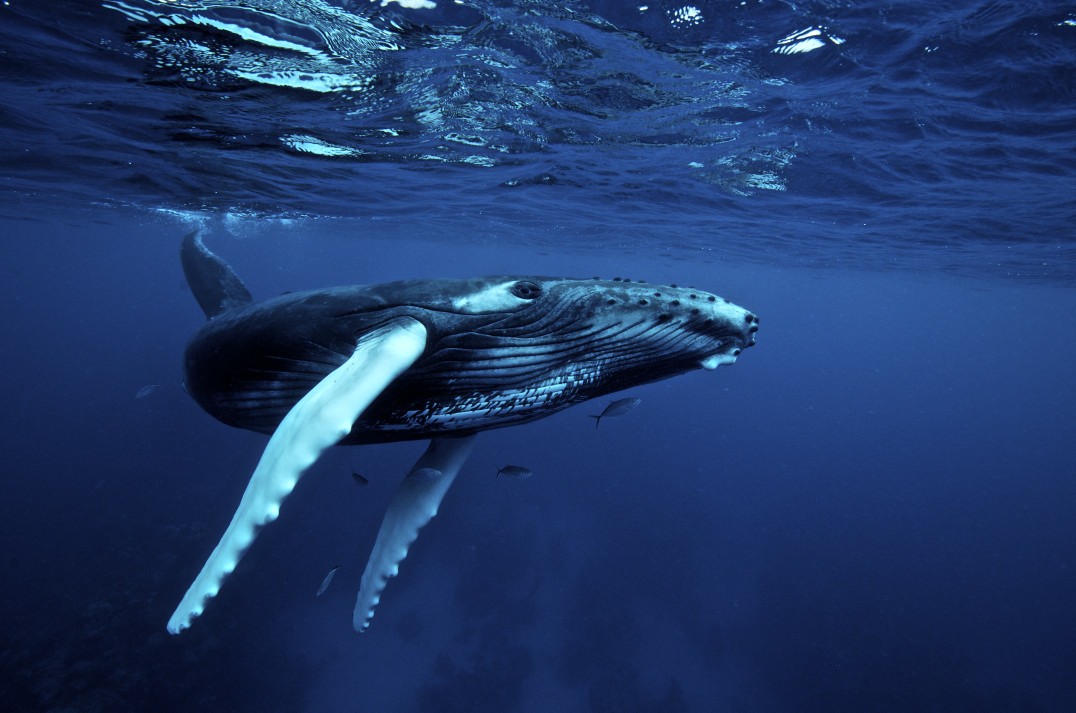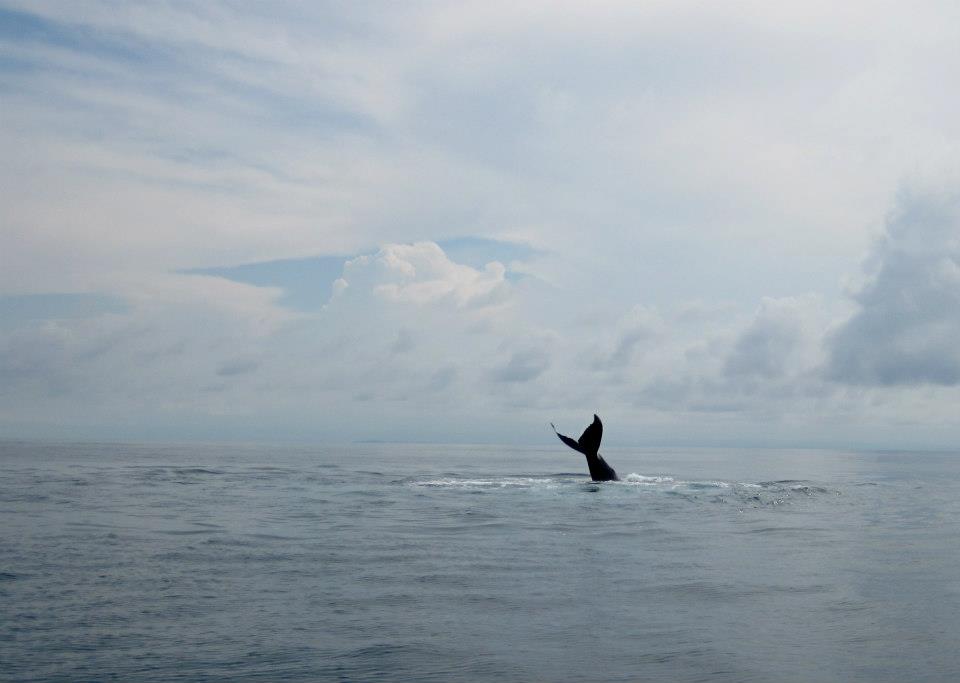The Humpbacks are Back!

From July to November hundreds of humpback whales spend “winter” in the tropics. These giants migrate to warmer, plankton-rich waters to mate and calf. Humpback whales can be seen around Panama City and Taboga Island, although their favorite places are close to Contadora Island in the Pearl Archipelago and off the Azuero Peninsula near Pedasi. Warm, shallow protected waters offer the ideal environment for breeding and raising young ones. This migration is the first of two humpback migrations that travel through Panamanian waters. Humpbacks migrating through Panama from the southern hemisphere come from as far as Antarctica, the journey is the longest mammalian migration to ever be documented.
Central America is the only known breeding area where two populations migrate from distinct hemispheres. The second migration comes from the Northern Hemisphere, showing up between December and February. An article in Marine Mammal Science spoke to the unique occasion where an intermingling between the two migrations could occur.
Scientists are able to identify and track humpbacks by unique markings on their tail flukes and by their songs. Since humpback whales from different oceans produce different songs, the study of each population’s unique song could lead to the understanding of their movements and the possibility of shared genetics between the two migrations. (Oviedo, Guzman, Gonzalez, Capella Alzueta & Mair, 2007)
Humpback whales are so named because of the “hump” their bodies create when then they bend their back while breaching and diving. While the humpbacks can consume between a ton and a ton and a half of food a day, they don’t eat while they are breeding in Panama. Humpbacks eat in high latitude deep cold waters and breed in low latitude shallow warm waters. It is believed humpbacks make the long migration journey because the warm waters are better for the development of the calf and offer better protection from predators.
Panama would bode well to recognize the benefits that protecting and promoting whales will have on the country’s tourism industry. To minimize the damage shipping traffic has on migrating humpbacks, officials and scientist developed a plan that would corral shipping vessels into narrow lanes and reduce the speed through certain humpback populated areas.
Whaling activists push on, as there is still a lot to learn about these giants. Advocate Anne Gordon of Panama Whale Watching is working to share their beauty without having a negative impact on them or their habitat.
Last year, Panama was host to the International Whaling Commission’s Annual Meeting. There, Anne Gordon met with fellow whale watch operators, scientists and government officials from over 20 countries to discuss a 5-year strategic plan for the protection and study of whales, while promoting the whale-watching industry.
The plan sought to build a sustainable whale watching industry that would limit negative effects on marine life. By use of whale-watching tours to gather meaningful scientific data the plan also shows intention of aiding scientific research.
With the development of systems to monitor the impact of tourism, and the increased ability to share gained knowledge, we stand to learn a lot about the species and how we affect them.
In the midst of rainy season, whale-watching tours along Panama’s Pacific coast are generally action packed. On an eventful a trip with Anne Gordon last season, we hit the mother load of whale-watching encounters. We saw a mother and calf pair as well as a group of males “showing off” by slapping their tails on the surface of the water. The trip ended with the grand finale of a whale breaching.
While whale-watching tours cannot guarantee that you will see whales, you are almost certain to see these magnificent creatures if you travel to the Pearl Islands between now and November. A good tour operator will allow the whales to dictate the route, following pods at a respectful distance and waiting patiently. Some operators, like Panama Whale Watching Tours, carry hydrophones, under-water microphones that allow you to hear the whale songs.
Whether you are just passing through Panama or are here for the long haul, don’t miss your opportunity to meet the humpbacks!

